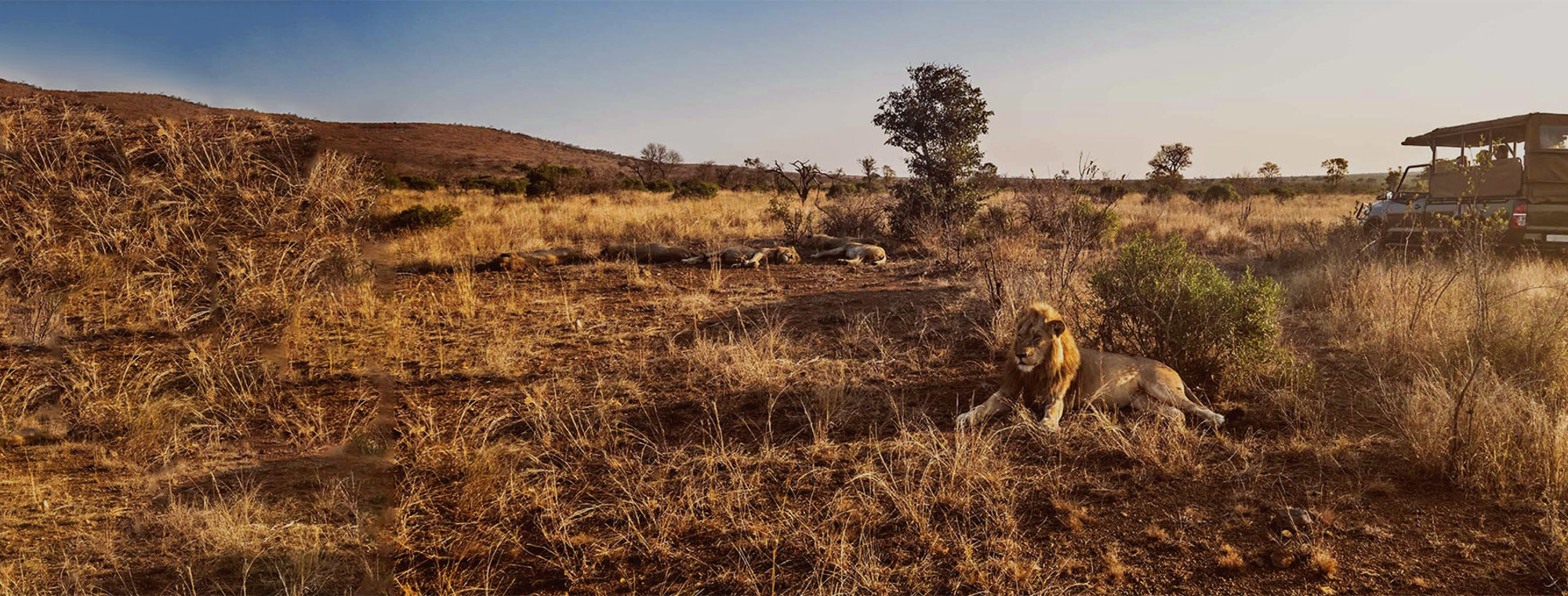What to Pack
for a Safari Adventure
for a Safari Adventure
From game drives to wine country everything you need to know

What to Wear on Safari
Part of the pleasure of going on safari is that you get to dress the part. Yes, that means you can wear tan from head to toe without being stopped by the fashion police—so have fun with it! As you’re pulling together your perfect safari outfit there a few practical things to keep in mind. First, avoid bright colors. Neutral earth tones are best (brown, tan, grey, or green) because they help you blend into the environment, not stand out.
You do not need to restrict your clothing to safari colors or earth tones. Avoid bright colors that can scare animals away and dark colors that can attract insects. Make sure this clothing will be comfortable for trekking and extended periods of travel in the bush. Plan to dress in layers so you can adapt to temperatures throughout the day and be sure you have long sleeves and long pants to deter insects. Read more on what to bring on safari each day below!
You should also dress for the climate and time of year. If you’re going on an early morning game drive, for instance, the air can be cool so dress in layers to stay warm. During the summer months, which run from late November to April, we recommend that you pack some light rain gear. If you’re traveling during the winter months (May to September), be sure to dress warm: a warm waterproof jacket, a scarf, and gloves will help to keep the cold at bay.
Essential to Pack for a Safari
The Right Adapter
Buy an adapter or two that will safely convert South Africa’s 220/230 volts AC 50 HZ electricity for your electronic devices. Get an adapter that will fit the plugs in South Africa, which are typically 15 amp 3-prong or 5 amp 2-prong, with round pins. Don’t forget your camera and battery charger when you’re packing your electronics.
Your Camera
You’ll be taking a lot of photos when you’re out on safari, but camera equipment can weigh you down—the key is to pack light so that you are nimble enough to snap that not-to-be-missed shot. While smartphone cameras continue to improve, a quality DSLR camera with an optical lens is a must if you want the best photos possible. Consider taking along a telephoto lens if your goal is to get more intimate shots of the local wildlife. Don’t forget to pack extra batteries and memory cards—with all of your snapping you may go through batteries and memory faster than expected! You’ll also need something to protect your equipment from the elements. We recommend that you store your camera and accessories in a waterproof and dustproof bag. Make sure your camera is charged, you never know what you will encounter!
Binoculars
On safari, you’ll be getting up close to many animals on your game drives, but other wildlife, including birds, are frequently viewed from a distance. For those situations, nothing beats a great pair of binoculars. Go with a pair that offers at least 8x30 magnification, that way you’ll be able to comfortably view game from afar and the images will appear crisp and vivid.
Sun Protection: Sunscreen, Sunhat, and Sunglasses
Remember when you’re out in the bush to protect yourself from the sun. Pack a quality pair of sunglasses to protect your eyes—polarized sunglasses work best to reduce glare. A wide-brimmed hat is also recommended to reduce your direct exposure to the sun. Finally, ensure you apply sunscreen before and during your safari game drive, we recommend a sunscreen that is scent-free.
Walking Shoes/Hiking Boots
Whether you’re on a game drive or a walking safari, a reliable pair of walking shoes or hiking boots will help you get the most out of your safari experience. Guides will often direct your attention to the smaller things on safari, such as plants or insects, and if your footwear is comfortable, you’ll be able to get up close to these smaller natural wonders of Africa while feeling safe and secure in the elements.
Insect Repellent
Most game lodges provide insect repellent to guests, so take advantage of that and apply some before you head out on safari. If any part of your safari occurs before or after sunrise, pack some extra repellent as the mosquitoes tend to come out when the sun isn’t around.
Small Medical Kit
It’s thrilling to be so close to the natural world of Africa when you are out on safari, but that also means that because you are in a remote location you may not have access to basic medical supplies. That’s why we recommend you pack a light medical kit that includes essentials such as aspirin, bandages, stomach relief meds, and an anti-histamine cream—this way you’ll be prepared for anything that comes your way
Easy Safari Packing List
- Good quality sunglasses preferably polarized
- Golf shirts, T-shirts and long-sleeved cotton shirts
- Sun hat
- Shorts, skirts, long trousers, slacks
- Dress/Jacket and tie
- Good walking shoes and/or hiking boots
- Bathing suit
- Warm sweater
- Warm waterproof jacket and scarf/gloves for cold winter months (May to September)
- Light rain gear for summer months (late Nov to April)
- Camera equipment and extra batteries
- Extra pair of glasses
- Binoculars and a bird book if you are a keen birder
- Suntan lotion
- Insect repellent (provided by most game lodges)
- Basic medical kit (aspirins, band-aid, Imodium, antiseptic cream and Antihistamine cream, etc.)
- Tissues/"Wet Wipes"
- Visas, tickets, passports, money, etc.
- Waterproof/dustproof bags/cover for your cameras.








